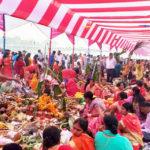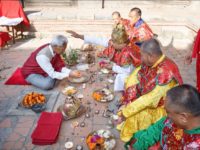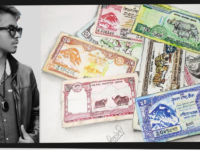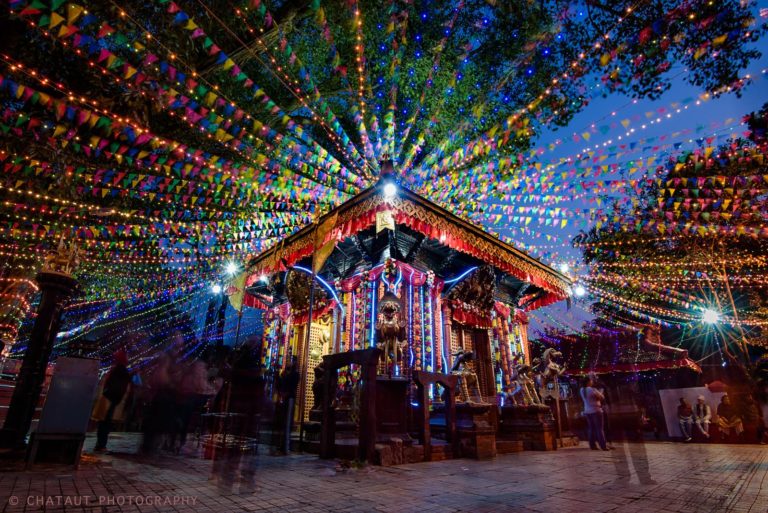By Om Tat Sat,
Nepal is caught in the grip of the second most popular religious festival, Tihar, also known as Dipawali, or festival of light. There are many positive messages and customs associated with this festival, unlike Dashain marred by animal sacrifices. This is the time for lighting up and inviting light into our lives.
The religious stories behind worshipping the animals–crow, dog, cow, and ox—are many. There are many significant omens also related to them and their activities. For instance, a crying dog is believed to indicate something bad to the family, and a flock of crows cawing together is supposed to mean catastrophe to the community. They may mean nothing but the truth is that both the crow and dogs play important roles in maintaining clean environment around us.
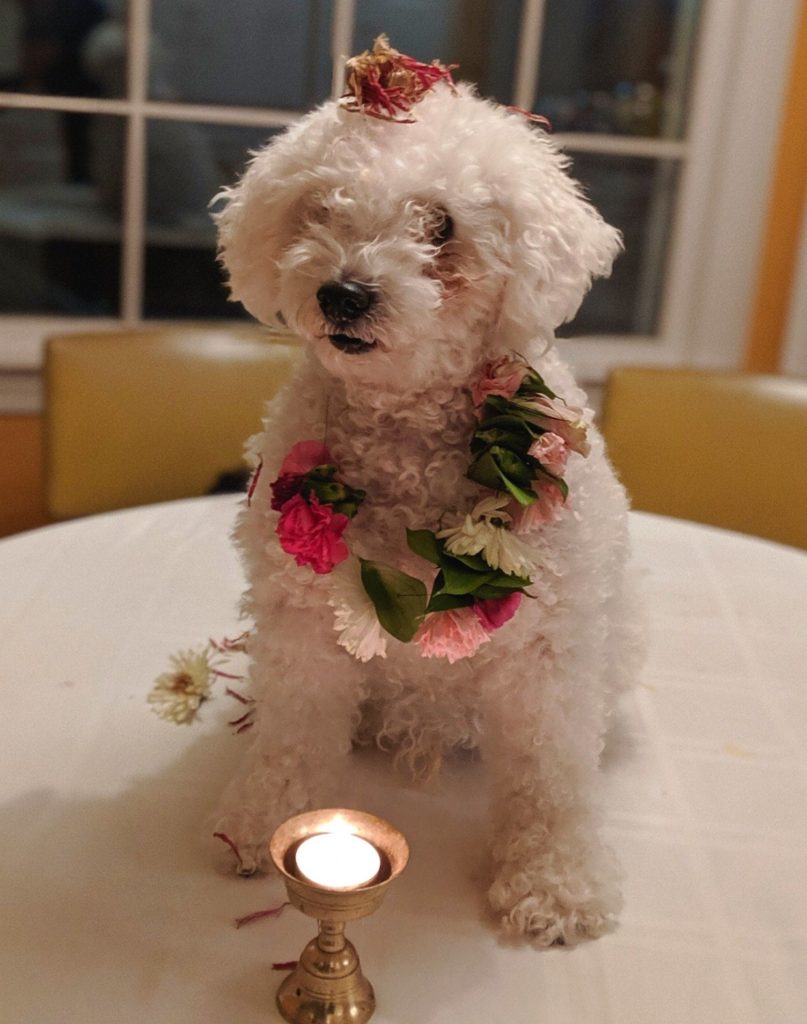
Cows are the most respected, cherished and prized possession in Hindu mythology. There are many scientific reasons to value cows. They are the only animals in the Indian subcontinent whose value surpasses everything else. In one mythological story, a cow is worth more than a kingdom. Cows’ urine and poop/cow dung possess medicinal qualities, while cows’ milk, yogurt and ghee offer tremendous health and nutritional benefit. For example, effect of milk, yogurt and ghee is said to remain in our bodies for 7, 20 and 30 days, respectively. Hence all three of them are included in the Panchamrit, an ambrosia cocktail that also include honey and sakkhar (jaggery).
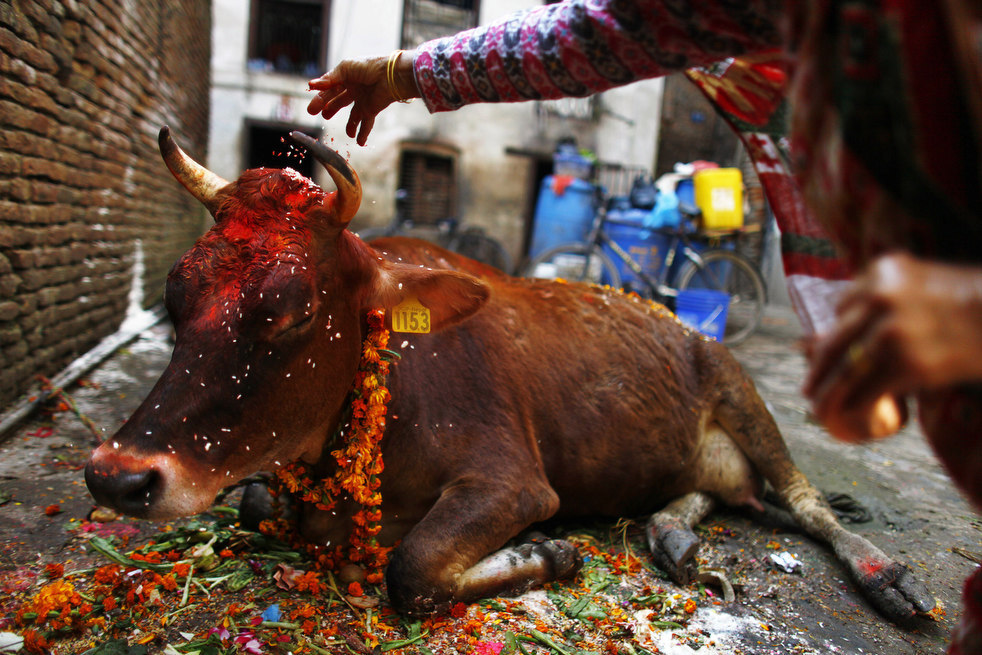
Other aspect of Tihar that humanity needs to emulate are the Bhai Puja (sibling relationship where a sister worships the brothers) and Mhah puja (Newari tradition of worshiping the self). While the Western culture also celebrates some of the familial relationship, father and mother, Vedic culture has this special day for brothers and sisters. If someone does not have own biological brother or sister, it is quite common for them to select and invite someone unrelated but highly admired to enter into this sibling-like relationship and perform this puja.

Next, the whole community cleaning up and lighting up at night is an invitation to prosperity and happiness in our lives. Who doesn’t need them? And the ancient culture taught that the way to prosperity is through cleanliness of the environment and bringing light to our lives. The deeper meaning has to be that we most remove blemishes from our mind, soul and character. Lighting up homes and the community means that we should individually be the light that removes darkness. Unfortunately, while we celebrate the day, we forget the meaning imparted by the ancient wisdom.
And lastly, the most community-friendly part of Tihar must be the Deusi and Bhaili. After Laxmi puja, the invitation to Goddess of wealth for favors, group or boys and girls go out to the community performing songs, dances and narrating ancient tales, and in return they collect offering and fund from the community households. These Christmas carol like part of the festival highlights the community bonding and cultural heritage that brings unites the people. Fundraising from Deusi and Bhaili have been used to support community projects and people in need, another admirable lesson of this festival.
Despite all the positive message highlighted by this festival, there are something that could make it better. One danger that has crept up is the dangerous fireworks that are causing harm to the animals and children, including spreading toxic chemicals in the community. Second, news report has pointed out that trillions of rupees is spent for importing the basic ingredients used in the festival, like the masala (a mixture of cashew, walnut, dried fruits, almonds, etc) offered in Bhai Puja by sisters, and the light bulbs to decorate the homes. Unnecessary items would be fireworks from India. Nepal could greatly benefit from investing in these products right at home for a ready market.
In the world headlined by environmental catastrophe impending on us, Western society could do well for humanity if they checked upon the unbridled consumerism and celebrated oneness of life by respecting and caring for the environment. One such example was presented by Mexico animal rights activists, who also starting to honor and celebrate their dogs by emulating Nepal’s Kukur Tihar by putting vermillion power on their dogs and feeding them treats. That would be the finest way to treat man’s best friend.
Newar community of Nepal goes even further and celebrates their own body and performs a body puja. Now, isn’t our body the very basis of life and experiences on Earth? So why not make sure that we keep our bodies healthy and in prime so that everything else will be that much better? And to that effect, connecting with our own soul would even help liberate us from the sansara.
The ancients have ingrained many of the vital lessons in Tihar festival, whose history dates back to thousands of years in the past to Dwapar Yug. Modern humans had better look into the deeper meaning and embrace them for the good of humanity.
The writer is a graduate of Arizona State University in Political Science. He is working as a social activist and motivational speaker for students across Nepal since 2007.
The views and opinions expressed in this article are those of the author and do not necesarily reflect the official policy or position of Nepalisite.


